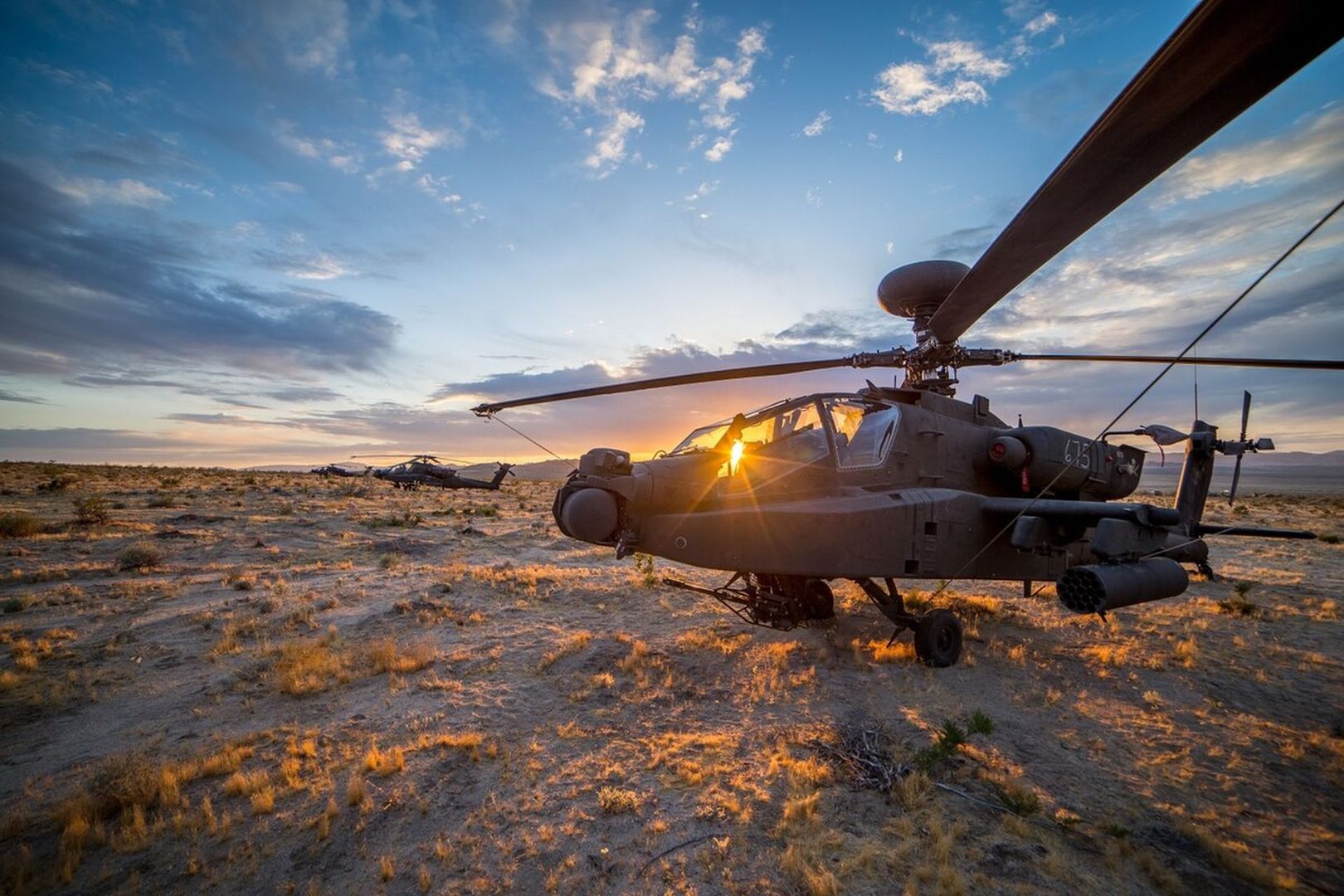The IAF’s attack helicopter squadrons operate constantly and take part in aerial support to ground forces and conducting attack sorties. The squadrons are using unique advantages that are crucial in the current era
The IAF operates two squadrons of attack helicopters, both of which operate from Ramon AFB. Squadron 113 (“The Wasp”) that operates the AH-64D Apache Longbow helicopter, and squadron 190 (“The Magic Touch”) that operates the AH-64 Apache. Fighting under changing weather conditions, attacking special targets, and supporting the forces on the ground are just part of the squadron’s missions.
The attack helicopter can “sense” the battlefield weather conditions and cooperate with ground forces. These abilities, combined with the helicopter’s weapon systems, make for an ultimate support aircraft.
The attack helicopter is capable of attacking a variety of targets. From tanks to structures and terrorists. Additionally, the aircraft is capable of flying in different directions, low altitudes, and complex terrain.
The munitions of the attack helicopters are unique. The helicopters can hit a specific target, a crucial ability in an era where most battlefields are small urban territories. Furthermore, attack helicopters have the luxury of being able to take off and land almost anywhere without needing an airstrip or control tower.
Prolonged Communication
In just one sortie an attack helicopters can accomplish a number of missions, one after the other. “I can support ground forces or complete missions with special operation forces and later give attention to a different task” shares major U, squadron 113’s deputy commander. The aircrew is aware that the attack’s destination can vary and they must learn new targets and fly to different areas in a matter of minutes. “The missions compatibility in the air is manageable thanks to the squadron’s and aircrew’s flexibility that operate the aircraft”, explains captain A, an aircrew member from squadron 190.
One of the squadrons most known and honorable missions is to support ground forces that had encountered the enemy. “We’ve been committed to this mission for many years so far and it has become inseparable from our character,” points out captain A. “The alignment has a variety of abilities, therefore we’re able to accomplish many missions and attacks, withstand threats, challenges and face quick adaption to the change of areas”.
“When a certain zone heats we keep contact with the spatial divisions about threatening zones, and accordingly, when necessary, we can hit a specific threat that endangers our forces”, shares major U.
“The attack helicopters keep daily and constant interaction with the spatial divisions and ground forces”, mentions major U. “Together we consult where we stand”. The helicopter squadrons are aware of the division’s well-prepared activities, therefore the aircrews can respond to different threats with the help of initial intelligence information and the planning of goals beforehand.
Consolidation, Individuality and Warrior Brotherhood
The squadrons take an important part in performances, attacks and unexpected events.” During an operational activity, every detail is very clear. Every crewmember recognizes his responsibility, his flight route and what’s expected of him in the mission”, explains captain A. “When the siren goes off, ordering action, everyone heads to the squadron. The attack plans are brought to us, and in no time we deliver a brief instructions and take off. When the mission concludes we return to the squadrons and debrief the event- in this time we discuss certain points that need to be improved, and adorn our achievements”.
However, in unexpected events, there’s a defined and organized routine in order to allow rapid and effective actions followed by aircraft taking off into the sky as quickly as possible. “The aircrew rushes to the helicopters once the siren is heard. They’re given the mission’s details through a communicator only after they are in the air”, continues captain A. “just like that, a few minutes after the alarm, the helicopters are in mid-air and are ready to respond to every order and attack the target”.
“There’s something so unique about the attack helicopters that cannot be put into words”, mentions major U. The aircrew members inevitably develop knowledge in a variety of tasks with the uncontrollable, constant change of reality. “The squadron’s modest number of people creates such a consolidated and outstanding atmosphere that’s led by a large warrior brotherhood”, summarizes Major U.











